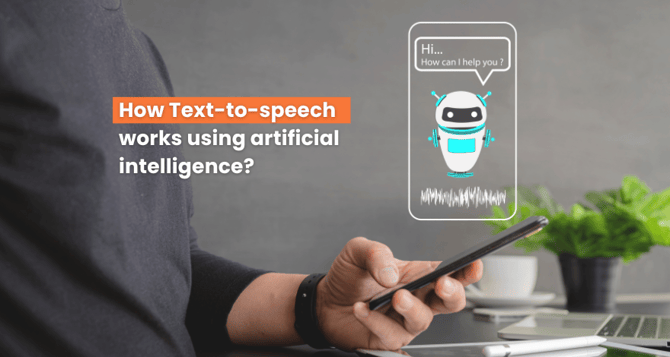How Text to Speech Works Using Artificial Intelligence
Artificial Intelligence drives Text to Speech technology, enabling lifelike spoken language generation for accessibility and tech advancements.

Text-to-speech (TTS) technology, an integral part of open AI development, is a form of artificial intelligence that converts written text into spoken words. It has come a long way in recent years, thanks to advancements in deep learning and natural language processing (NLP). TTS AI systems have become increasingly human-like in their speech synthesis, making them invaluable in various domains.
How Text-to-Speech AI Works
Text-to-speech AI systems rely on deep learning models called neural TTS models. Here's a simplified overview of the process:
1.) Text Preprocessing
The input text undergoes preprocessing to remove any special characters, punctuation, and formatting issues.
2.) Text Embedding
The processed text is then converted into a numerical format called embeddings. This step helps the AI model understand the semantic meaning of the text.
3.) Neural Network Architecture
The heart of TTS AI is a neural network architecture, often based on recurrent neural networks (RNNs), convolutional neural networks (CNNs), or more advanced models like Transformers. This network takes the text embeddings as input and generates spectrograms as output.
4.) Spectrogram to Speech
The spectrograms, which represent the audio frequencies over time, are converted into waveforms. These waveforms produce the spoken words, simulating human speech.
5.) Post-Processing
The generated speech may undergo additional post-processing to enhance its naturalness, such as adding prosody, intonation, and pauses.
Benefits of Text-to-Speech AI
1.) Accessibility
TTS technology is a crucial tool for individuals with visual impairments, making written content accessible to them.
2.) Voice Assistants
Popular voice assistants like Siri, Google Assistant, and Alexa rely on TTS AI to interact with users.
3.) Multilingual Support
TTS AI can easily switch between multiple languages, making it useful for global applications.
4.) E-Learning
TTS is used in e-learning platforms to provide audio versions of text-based content, enhancing the learning experience.
5.) Content Creation
Content creators can use TTS to convert their written articles into podcasts or YouTube videos, reaching a wider audience. By transforming written content into audio formats, creators can enhance engagement and even explore opportunities to monetize podcasts through premium content or exclusive episodes.
Popular TTS Tools and Frameworks
Google Text-to-Speech
Google offers a TTS API and tools that developers can integrate into their applications.
Amazon Polly
Amazon's cloud-based service for text-to-speech conversion is widely used for various applications.
OpenAI GPT-3
GPT-3, developed by OpenAI, can be fine-tuned for TTS tasks and has shown impressive results in generating human-like speech.
Mozilla TTS
An open-source project that provides pre-trained TTS models and tools for developers.
Challenges and Future Directions
Despite the significant progress in TTS AI, there are still challenges to overcome. These include improving naturalness, reducing the resource requirements for training, and making TTS technology even more accessible.
In the future, we can expect TTS AI to become more widespread, with applications in virtual reality, gaming, and even more realistic voice assistants.
Conclusion
Text-to-speech AI has transformed the way we interact with technology and access information. Its applications are diverse and continue to grow, making it an exciting field with enormous potential for the future.
Ready to Explore More About Our Solutions?
Get custom solutions, recommendations, estimates, confidentiality & same day response guaranteed!
As AI models become more sophisticated and training data expands, we can look forward to even more natural and immersive text-to-speech experiences.



.png?width=344&height=101&name=Mask%20group%20(5).png)
















